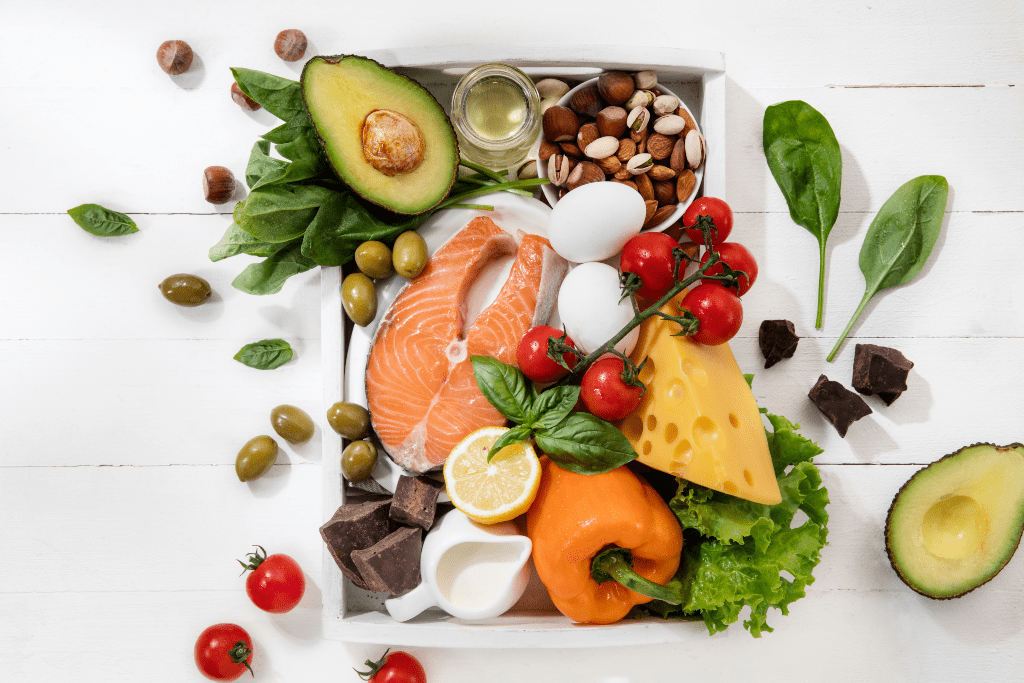
Cholesterol is a type of lipid that circulates in your blood; cholesterol is used to build cells and certain hormones.
Cholesterol comes from two sources:
Your liver makes the cholesterol your body needs.
The remainder of the cholesterol in your body comes from foods derived from animals.
For example, meat, poultry, and full-fat dairy products all contain cholesterol - this is dietary cholesterol.
These same animal-based foods are high in saturated and trans fats.
Saturated fats cause your liver to make more cholesterol than it otherwise would. For some people, this added production means they go from a normal cholesterol level to one that is unhealthy.
There are two main types of cholesterol: high-density lipoprotein, also known as ‘HDL’ and low-density lipoprotein, also known as ‘LDL’.
Lipoproteins are made of fat and protein and serve as vehicles for your cholesterol to travel through the blood.
HDL clears from the body via the liver. HDL may therefore prevent the buildup of plaque, protect your arteries, and protect you from atherosclerotic cardiovascular disease. It is considered the “good” cholesterol, and higher levels are better. A good goal to aim for is higher than 55 mg/dL for women and 45 mg/dL for men. The higher your HDL cholesterol numbers, the lower your risk is for heart disease, vascular disease, and stroke.
LDL is considered the “bad” cholesterol. It carries cholesterol to your arteries, where it may collect in the vessel walls and contribute to plaque formation, known as atherosclerosis. This can lead to decreased blood flow to the heart muscle (coronary artery disease), leg muscles (peripheral artery disease), or abrupt closure of an artery in the heart or brain, leading to a heart attack or stroke. Over a third of the US population has high LDL cholesterol. Diagnosis is made via blood testing, so if you don’t check, you won’t know.
For LDL, the lower the number the better. A good goal to keep in mind is less than 130 mg/dL if you don’t have atherosclerotic disease or diabetes. It should be no more than 100 mg/dL, or even 70mg/dL, if you have any of those conditions or high total cholesterol. It’s very important to set your own target cholesterol levels with your doctor. Obesity, a large waist circumference, a sedentary lifestyle, or a diet rich in red meat, full-fat dairy, saturated fat, trans fats, and processed foods can lead to high LDL cholesterol.
Triglycerides are in the cholesterol conversation as well. They are a type of fat (lipid) in your blood.
When you eat, your body converts any calories it doesn't need to use right away into triglycerides. The triglycerides are then stored in your fat cells. Later, hormones release triglycerides for energy between meals.
High triglyceride levels may contribute to hardening of the arteries or thickening of the artery walls. This is arteriosclerosis - which increases the risk of stroke, heart attack and heart disease.
You can improve your cholesterol and triglyceride levels in as little as two to three weeks through lifestyle changes:
1. If you are a smoker, research clearly shows that quitting smoking can increase HDL (good cholesterol).
2. Boost consumption of heart-healthy omegas. These foods, like salmon, tuna, raw nuts & seeds, and extra virgin olive oil can increase HDL cholesterol, subsequently lowering LDL (bad) cholesterol.
3. Limit trans fats. A diet rich in trans fats raises LDL cholesterol and lowers HDL cholesterol. Avoid processed foods like chips, fried foods, baked goods and pizza.
4. Exercise regularly. A regular exercise routine can lower LDL cholesterol and boost HDL cholesterol. Aim for 150 minutes of exercise per week to achieve optimal health benefits. Additionally, HIIT workouts boost HDL quickly.
You can take action today to improve your cholesterol levels. Speak with your physician to set up an action plan that is best for you.
